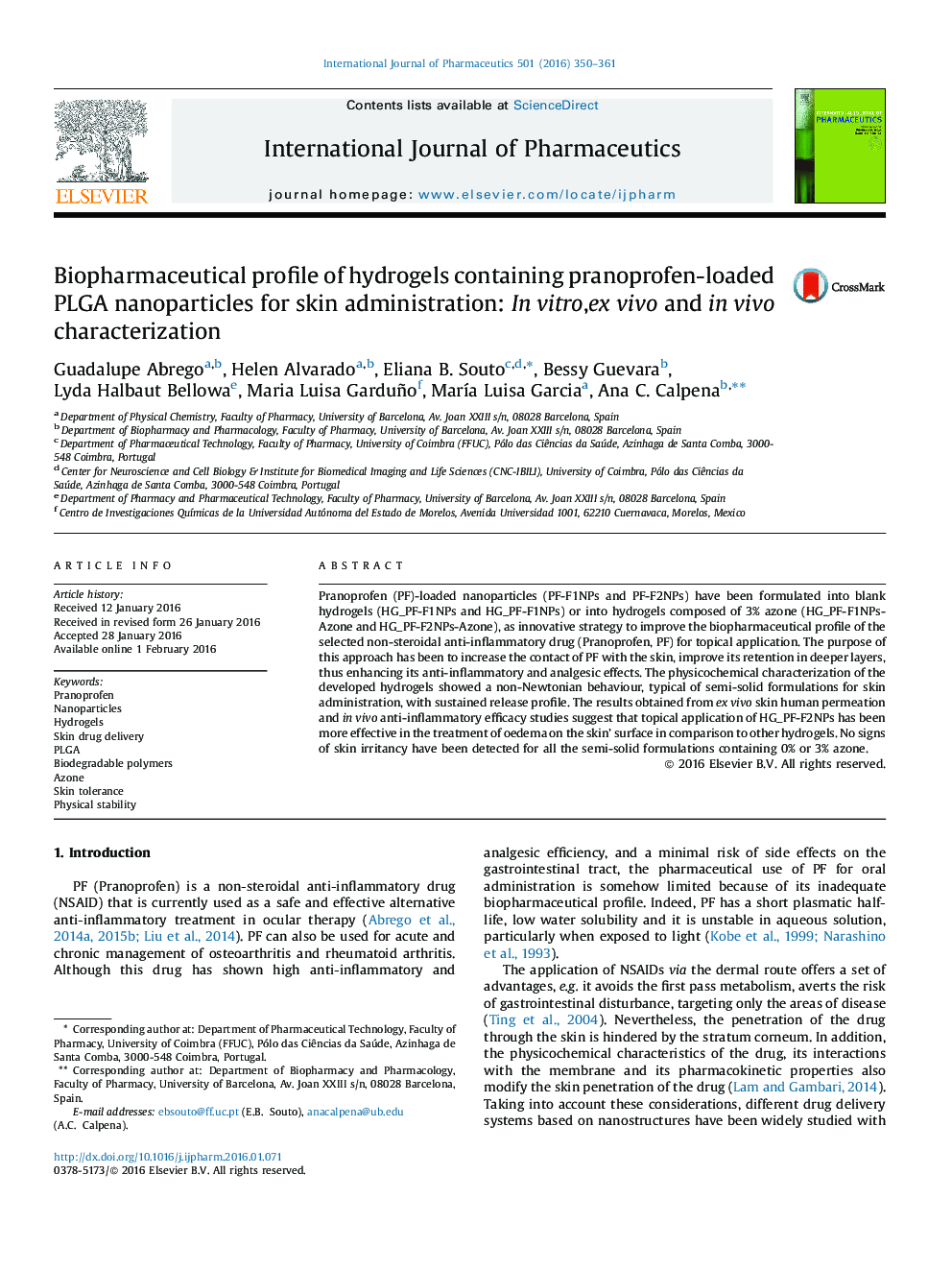| Article ID | Journal | Published Year | Pages | File Type |
|---|---|---|---|---|
| 2501114 | International Journal of Pharmaceutics | 2016 | 12 Pages |
Pranoprofen (PF)-loaded nanoparticles (PF-F1NPs and PF-F2NPs) have been formulated into blank hydrogels (HG_PF-F1NPs and HG_PF-F1NPs) or into hydrogels composed of 3% azone (HG_PF-F1NPs-Azone and HG_PF-F2NPs-Azone), as innovative strategy to improve the biopharmaceutical profile of the selected non-steroidal anti-inflammatory drug (Pranoprofen, PF) for topical application. The purpose of this approach has been to increase the contact of PF with the skin, improve its retention in deeper layers, thus enhancing its anti-inflammatory and analgesic effects. The physicochemical characterization of the developed hydrogels showed a non-Newtonian behaviour, typical of semi-solid formulations for skin administration, with sustained release profile. The results obtained from ex vivo skin human permeation and in vivo anti-inflammatory efficacy studies suggest that topical application of HG_PF-F2NPs has been more effective in the treatment of oedema on the skin’ surface in comparison to other hydrogels. No signs of skin irritancy have been detected for all the semi-solid formulations containing 0% or 3% azone.
Graphical abstractTEM of NPs-loaded Hydrogel and in vitro release profiles of pranoprofen (PF) from PLGA NPs containing 1.5 mg/ml (HG_PF-F1NPs) and 1.0 mg/ml (HG_PF-F1NPs) and the effect of the presence of Azone.Figure optionsDownload full-size imageDownload high-quality image (96 K)Download as PowerPoint slide
